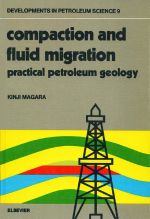Добрый день, Коллеги. Важное сообщение, просьба принять участие. Музей Ферсмана ищет помощь для реставрационных работ в помещении. Подробности по ссылке
Compaction and fluid migration. Practical petroleum geology / Уплотнение и миграция жидкости. Практическая нефтяная геология
Conventional oil and gas are usually found in pore spaces and fracture openings of sandstones, limestones, and dolomite. Shales, although considered to be important in many cases as source rocks and cap rocks for hydrocarbons, usually do not contain commercial oil and gas. In other words, from the standpoint of production, shales are relatively useless rocks.
If, for example, an exploratory well were drilled and a geologist tried to evaluate whether it had penetrated oil and/or gas accumulations, he would first separate the shaly sections as being of no interest, and then try to find out whether the other sections were oil-(and/or gas-) saturated or watersaturated. <...>1. Introduction
2. Shale compaction and estimation of erosion and structural timing
3. Calculations of pore pressure from shale compaction data
4. Causes of abnormal surface pressure
5. Application of calculated pressures and porosities
6. Concept and application of fluid-loss calculations
7. Evaluation of pressure and capillary seals
8. Concept of three-dimensional fluid migration
9. Porosity-permeability relationship in shales
10. Changes in shale pore-water salinity during compaction
11. Importance of abnormal pressuring in shale diapiriiam
12. Estimation of oil-genesis stage
13. Estimation of paleopore pressure and paleotemperature
14. Primary hydrocarbon migration
15. Oil-reserve evaluation from sandstone thickness and type and source rockquality




